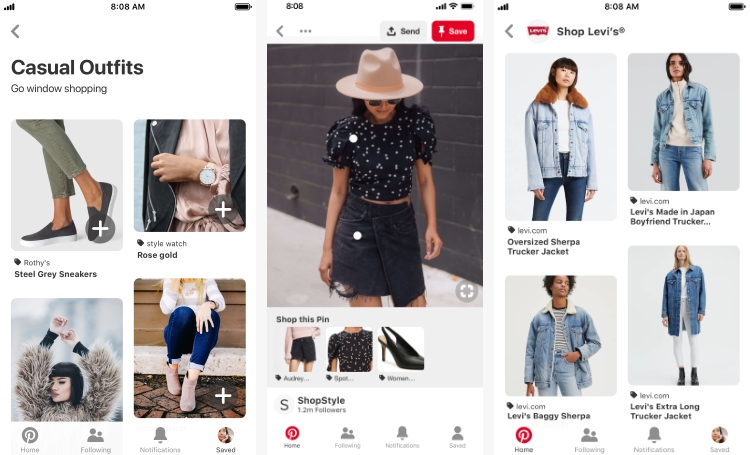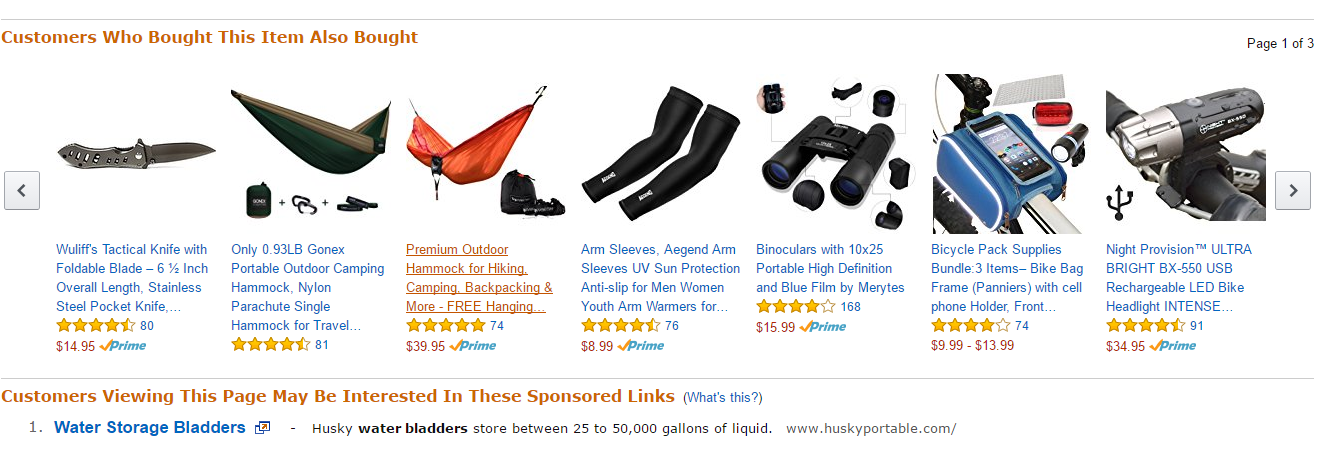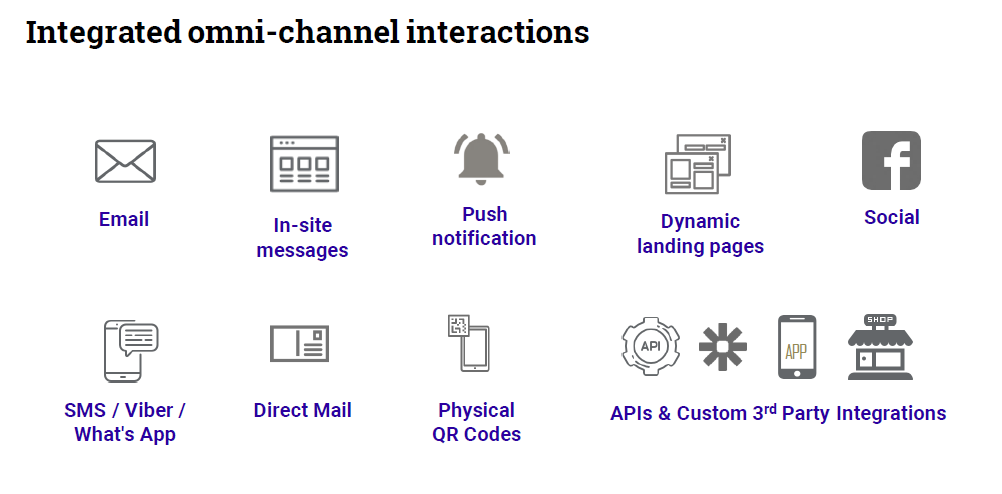Each year, Gartner, the world-leading research and advisory firm, identifies top strategic trends that shape the future of businesses across the globe. Retail business owners, CMOs, and eCommerce professionals have highly anticipated Gartner Trends on Digital Commerce 2020, as it provided insights into the ever-shifting digital commerce landscape with sophisticated analysis. From AI to Visual Commerce, there are many emerging trends to watch and, more importantly, adopt to grow your business.
In this post, we picked five of Gartner trends on digital commerce that we believe have the most near-term impact on eCommerce business for a deep dive. Aside from the analysis, we focused on presenting actionable ways to apply these trends. At the end of the post, we hope you will walk away with 15 tactics you can experience with your business. So, let’s dive in.
What is Digital Commerce (D-Commerce)?
According to techopedia, “D-commerce” refers to companies that sell news, subscriptions, or any form of electronic content, as well as those involved in the payments, billing, and other relevant processes for the digital publishers.
In other words: D-Commerce (or Digital Commerce) describes the business selling non-tangible products.
Update: Heard it? We released the Top 15 Retail Technologies of 2023 and the top retail trends of 2023 you should watch this year. The piece is ideal for CMOs and C-level executives who want to take an brief idea of the most promising and impactful technologies this year. Don’t miss reading it!
What’s the difference between digital Commerce and eCommerce?
The main difference between digital Commerce and eCommerce is that in digital Commerce, the entire process of buying, including the transaction and delivery of the product, occurs online, which means that the product or service is non-tangible. eCommerce, on the other hand, includes both tangible (e.g., consumer electronics) and non-tangible (e.g., eBooks, subscriptions, etc.) goods. Hence, digital Commerce is a part of the eCommerce ecosystem.
Gartner Digital Commerce Trends 2020
Here our view of the top five Gartner digital commerce trends. For each trend, we structured the analyses into three main components – a summary, ways to apply in your business, and the relevant solutions/startup to watch.
Gartner Trend #1: Visual Commerce
Summary
Visual Commerce is about bringing the eCommerce experience as close to the real-life shopping experience as possible.
Visual Commerce includes a series of tactics a brand uses to showcase its products visually – from 360 product photos or videos to user-generated content (UGC) from social media. More recently, with the rise of Augmented Reality (AR) tools, retailers can even project how the product would fit virtually on the customers. Aside from visual showcase, this trend also includes functionalities that enhance the way customers discover the offerings via search, such as “shoppable” image feeds or based on visual similarities.

Example: Gap introduced a virtual dressing room to give customers a way to visualize how a product may fit.
Tips on how to apply Visual Commerce trends
Visual Commerce is about influencing how consumers experience the brand and the entire shopping journey.
Try the following visual commerce tactics:
- Optimize visual assets. Upgrade your default product photos from .jpg to .jpeg2000 or webp formats to achieve higher quality and better loading speed
- Test out 360 product views. Identify your top-selling products (or those with the highest margin), and take 360 angle photos or videos of them. This can greatly enhance the UX on your product pages. After you collected a significant number of visiting traffics, compare the difference in sales conversions with the new 360 visual products versus before. If the conversion rate is higher, repeat the process on other products too.
- Invest in a visual search tool. Offer something similar to the Ali Express like visual search experience. This capability can drive more interest to your site, particularly consumers who are comparison shopping and may not yet know your brand. Pinterest also offers a visual search that’s linked to paid promotions.
- Leverage UGC as part of your visual content. Try a tool like Snapppt to showcase your customers’ photos on your Product Pages. “Repurposing” User Generated Content (UGC) from your social media to work as social proofs, which help generate organic interests for your products.
Promising tools in Visual Commerce
- Olapic: User-generated content & influencer marketing platform. Brands can tap into Olapic’s media library that helps them build a large, curated stock of on-brand user-generated images, and places the content where it can have the greatest impact: ranging from ecommerce merchandising to ads.
- Curalate: Curalate enables brands to use social content for selling more effectively online by turning images on social into visual storefronts.
- Visenze: An AI-backed platform supporting discovery and search via images. Consumers can point the camera at the product and be shown a world of visually similar products to shop.
- Snapppt: Allows you to build shoppable galleries, UGC, find influencers & build communities on Instagram.
- meepl: Virtual dressing room app that allows customers to create personalized 3D body profiles to visualize how products look on themselves.

Example of visual shopping ads on Pinterest
Gartner Trend #2: eCommerce Personalization
Summary
eCommerce personalization is the practice of creating personalized experiences and interactions with customers across the various touchpoints within the customer journey. Personalization comes in the forms of the content displayed and product recommendations that are tailored for the target audience. It is among the top trends of eCommerce in recent years because of the effectiveness of conversions compared to non-personalized communications.
The context of personalization is drawn from web behaviors, purchase history data, campaign interactions, and other demographic data. Often these data insights are used as part of segmentation and marketing automation to generate timely engagements that speak to each customer.
Tips on how to apply eCommerce personalization trends
A sound omnichannel marketing automation strategy can significantly boost sales conversions from day one. So, try the following eCommerce personalization tactics:
- Set up personalized product recommendations based on the products customers’ viewed by but didn’t purchase (aka browse abandonment). A common example of this is Google retargeting Ads, where customers get a reminder of the product viewed. However, you can run retargeting campaigns across a variety of channels – email, push notifications, social media – along with product recommendations alternative to the ones viewed.
- Run location-based campaigns on your latest promotional offers via email or push notifications. Delivering location-specific messages can increase conversions since proximity is a major factor in purchase decisions.
- Trigger a dynamic, behavioral-driven exit-intent pop-up for returning buyers with complementary products to the ones they have previously purchased. For example, if the customer has already purchased gaming systems, the ideal pop-up content would be game recommendations. Another pairing can be cellphone and accessories, skirt and matching tops, etcetera.
To see how it works for your business, start by testing this on a selected number of the top-selling category. If it works, you can scale this up across the rest of your product offerings!

Example of product recommendation automation used by Amazon
Promising tools in eCommerce Personalization
- ContactPigeon: Marketing Automation for Ecommerce
There are many many marketing automation platforms out there, but very few support omnichannel engagement and are tailor-made for retailers. ContactPigeon enables campaign personalization by truly integrating customer data across online and offline channels.
Gartner Trend #3: Trust and privacy
Summary
With the recent rollout of European regulations and GDPR, there is a heightened level of stress on organizations to ensure data protection practices are in place. If you operate or sell to customers in the EU, USA, or any developed nations, you are required to adapt to the stricter data rules. Research shows that, on average, about a third of the web traffic on the internet is malicious. Therefore it’s essential in 2020 to adopt practices and tools that protect your customers and your brand. You should invest in security and privacy to:
- Avoid data theft of leakage
- Ensure all transactions are safe
- Comply with data privacy rules
- Increase user trust and loyalty and increase returning customers
Tips on how to apply Trust & Privacy trends
Evermore so, building trust in the digital age has become a key differentiator for smart businesses that can demonstrate a deep understanding of consumer relationships. Consumers tend to buy more from organizations they believe protect their personal data. Survey shows that 84% of consumers identify good data security as the key characteristic they look for when deciding where to spend their money.
Here are some tactics you can employ to build a more secure organization:
- Inform your love for transparency. Transparency gives your customers assurance on what personal data are captured and how they are used. Be honest and open about the data you are taking allows customers to feel more confident in their transactions with you. They will also be more likely to trust you with a deeper level of information. As the basics, keep your privacy terms updated with easily understandable languages. Another good practice is to list contact info for anyone who has privacy concerns or questions, making it easier to reach you.
- Enforce robust data security. Keeping your online digital assets secure with the right tools and technical infrastructure – from SSL certificates to permission-based access and firewall.
- Make use of trust badges. They are a logo or symbol that can be displayed on your site to assure visitors on the legitimacy of your business. For instance, payment seals are especially crucial for small businesses that don’t have brand recognition yet.

Example of trust badges to include on your website.
Promising tools for Trust & Privacy
- Exterro: Legal Hold, eDiscovery, & Data Privacy Platform. Exterro’s Privacy solutions enable businesses quickly and defensibly develop and maintain a data inventory, respond to data subject access requests, conduct 3rd party risk profiles, and enforce business rules for storage, retention, and protection of personal data.
- TrustArc: Privacy and Data Protection Consulting Services. TrustArc offers a broad range of solutions to help businesses at every stage to set up a privacy program.
Gartner Trend #4: Unified Commerce
Summary
Continuity between all the stages of a customer journey and key business processes from order fulfillment to customer relationship management is what Unified Commerce delivers. In an increasingly digitally diverse world today, consumers move between mobile apps to the website to social media within clicks of a few buttons, the consumer journey experience across these channels should be seamlessly interconnected and fluid as well.
Here is an everyday example. A customer discovers a product on offer from Instagram and enters the website to learn more about the product. If the discount isn’t automatically applied, there’s a disconnect in the flow, causing the customer to give up on the purchase.
If you want to optimize the conversion rate across your digital sales funnel, then unified Commerce is a must. Not only does it improves the efficiency of your marketing, but it also enhances the overall user experience (hence affinity towards your brand).
Tips on how to apply Unified Commerce for your business
- Audit your UX for consistency. Run an audit to pin-point disconnects within the various touchpoints of a typical consumer journey across the key channels you support. The “glitches” you discover should be sent to your development team.
- Unify tech solutions. Retailers with complex application structure and CRMs often run multiple programs at once (e.g., loyalty, member cards, e-shop, retail store POS). This presents a huge challenge in delivering Unified experience as it takes significant work to integrate the multiple systems and data processes. One way to tackle this challenge is to be strategic when it comes to designing your IT/data architecture. Instead of designing for the need of one function (e.g., order & fulfillment), have an overarching view of how each data point or each transaction would be used to support the overall customer experience (e.g., fulfillment tracking to product feedback request). Another option to simplify your technology stack is to seek solutions that offer a unified customer view and multi-channel integration.
- Broaden channels of engagement. Offering multiple points of interaction is a terrific way to gain more brand exposure. For instance, if you have a broad customer base for your product, consider deploying a native mobile app. Big retailers and companies can further boost their customer retention this way, by strengthening the channels on which they are active. Furthermore, additional channels bring new data points on customer behaviors and insights that you may not have otherwise.
Promising tools for Unified Commerce
- ContactPigeon: Omnichannel personalized campaign engagements. ContactPigeon offers a single view of customers, along with a dedicated team of customer success consultants to advise on the best practices of omnichannel customer engagements for eCommerce.

ContactPigeon supports a growing array of channels to engage with your customers.
Gartner Trend #5: Subscription commerce
Summary
Popularized by startups such as Dollar Shave Club and Blue Apron, subscription commerce is a fast-growing segment of eCommerce. Subscription commerce is characterized by the recurring and automatic renewals of product orders on a set time-interval. It has gotten popular among businesses for its predictable revenue patterns, which also improves inventory planning and management.

Some of the most popular subscription-based retails.
According to Gartner, 75% of organizations selling directly to consumers will offer some sort of subscription services by 2023. This strong growth has attracted established consumer brand manufacturers and retailers alike. For example, P&G (Gillette on Demand), Sephora (Play!), and Walmart (Beauty Box) have all launched new subscription businesses.
Tips on how to apply Subscription Commerce
- Explore your product offering for subscription potential. Consumable products (e.g., toiletries, baby products) are obvious choices for subscription as customer tends to periodically repurchase these products. But also consider offering subscription services that help customers discover and experience products in new ways. For example, a monthly book club or season-based home decors.
- Experiment with selected products. You can minimize the disruption to your business by limiting the offering to a selected number of subscribers. Only scale up when you are sure that there’s commercial interest and unit economics works out.
Conduct market or keyword research on rising trends. Google Trend is a great way to get ideas on big themes, ideas, or topics trending. These can spark unique subscription models that may fit your niche. - Survey your customers. Run a survey on your loyal customer base to collect data on whether consumers would be interested in such a service.
Promising tools for the Subscription commerce industry
Other Gartner Trends every retailer should know in 2020
- Thing commerce. Home appliances can already make purchases on behalf of customers (e.g., Google Home or Amazon Dash buttons). The future of Commerce will not be limited to just web and stores, but rather from each device that consumers may interact with daily. The day that your fridge will be restocking empty milk carton or eggs is near.
- Enterprise marketplace. Marketplaces are on the rise, as selling products that are owned, managed, and serviced by third parties offers flexibility in selections at reduced costs.
- Customer analytics. In an age where Big Data and Analytics determines competitive advantage, this one is crucial. Insights into customers is a determining factor in winning their heart and wallet.
- Application programming interface (API) based Commerce. Applicable in larger-scale businesses it provides flexibility in building the site, the experience, and the infrastructure.
- Artificial intelligence. Artificial Intelligence and Machine Learning are already here: product recommendation, content personalization, fraud detection are only some of its applications on the business side. Third-party services like automation or advertising platform use these technologies as well.
Staying on top of the trends
2020 brings new opportunities as well as great challenges for retailers business and beyond. We believe that visual Commerce, personalization, unified experience, trust & privacy, and subscription economy are the five key trends that will continue to shape the future of retail Commerce.
As we all know, embracing changes and adopting new trends is the only way to ensure your organization remains competitive in the long run. The trick is taking on these trends in bite-size, strategic steps.
One last thing to note, it takes a team to succeed. Selecting the right partner and tools as you navigate the new trends can make the process less daunting and more quickly to see initial results before scaling up.
Interested in learning how ContactPigeon has helped hundreds of eCommerce businesses to scale on automation and personalization? Just book a chat with us to discuss.



![Benchmarking Growth Strategies of Top Fashion Retailers [Study]](https://blog.contactpigeon.com/wp-content/uploads/2025/11/top-fashion-retailers.jpg)